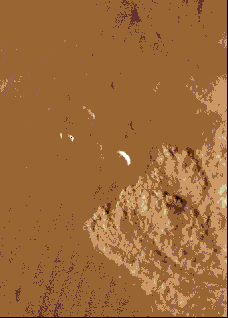This is a local dust storm on Mars located near the edge of the south polar cap.
Click on image for full size
Image from: Calvin J. Hamilton, LPI, and NASA
Martian Global Dust Storms
This image shows a local dust storm near the edge of the south polar cap. Viewing of this image at high resolution is recommended. This fascinating image shows dust swirling over a large area.
Martian global dust storms tend to start in the southern hemisphere with a local dust storm, such as the one shown here. Southern spring and summer seem to be the season for global dust storms. Local dust storms seem to be swept into huge storms which envelope the entire planet, as was discovered by the Viking mission to Mars in the 1970's. Global dust storms do not seem to occur every Martian spring or summer, however.
The action of sands carried by winds during Martian global dust storms makes a great contribution toward wearing down rocks on the Martian surface.
You might also be interested in:
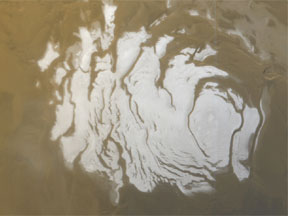
The Mariner 7 spacecraft took the first pictures of the South Pole of Mars. The south polar region is part of the highlands of Mars. The southern highlands of Mars are mostly old, cratered terrain and
...more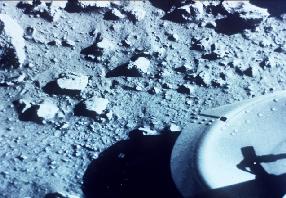
The Viking I and Viking 2 missions were designed to both orbit Mars and land and make exploratory observations on the planet's surface. At this stage in the history of the exploration of Mars, scientists
...more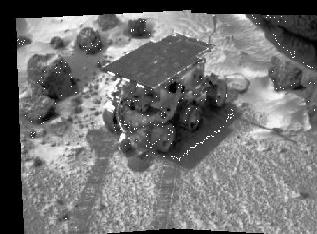
One of the objectives of the Mars Pathfinder mission was the examination of the composition of the soil and how it was laid down. As the Rover traversed the surface exploring the rocks of Mars, it also
...more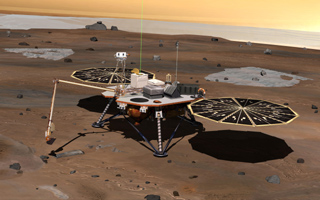
The Phoenix Mars Lander was a robot spacecraft that was sent to Mars. Phoenix landed near the North Pole on Mars. This page tells about the mission of Phoenix. It also describes the instruments on the
...more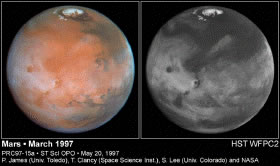
Unlike the Earth, where clouds are found around the entire globe, on Mars, clouds seem to be plentiful only in the equatorial region, as shown in this Hubble telescope image. This may be because water
...more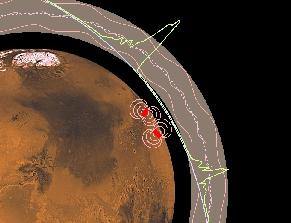
The Martian ionosphere is a layer of gas that is very high up above Mars and is composed of ions and electrons. It extends from about 75 miles up to several hundred miles up above the surface. It is shown
...more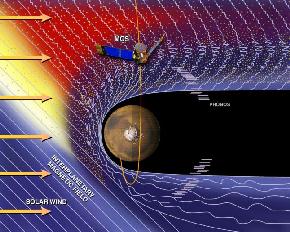
An important new result from the Mars Global Surveyor (MGS) mission is the definite confirmation of the presence of a magnetic field near Mars. The magnetic field leads to the formation of a magnetosphere,
...more


